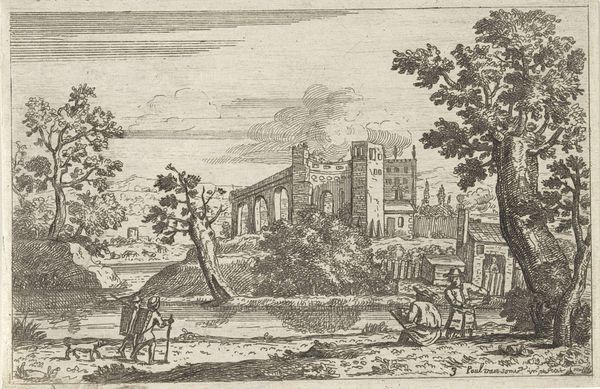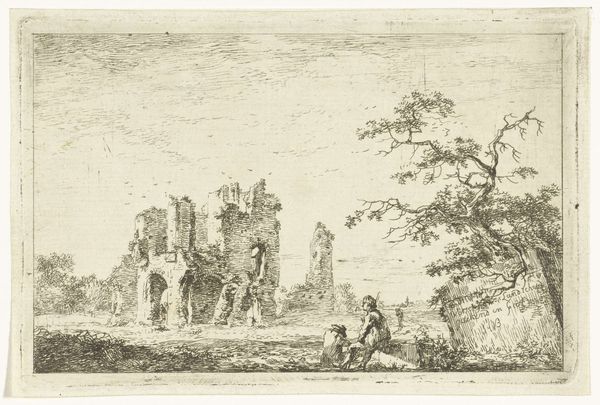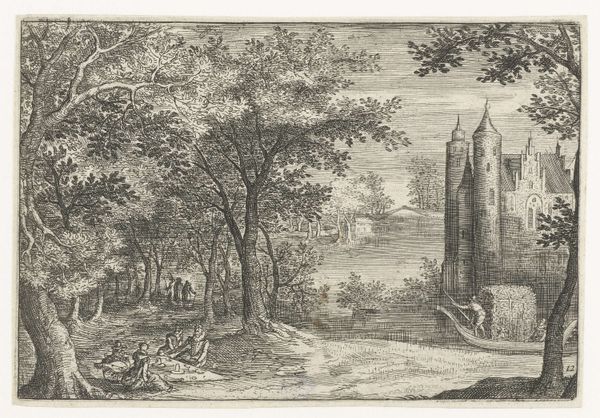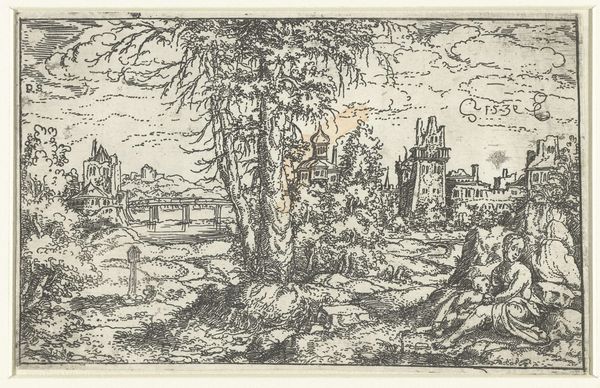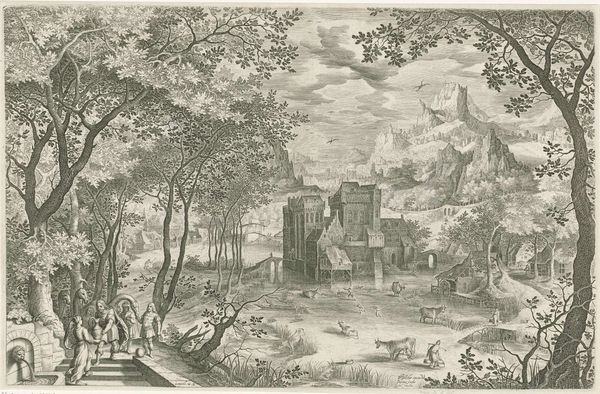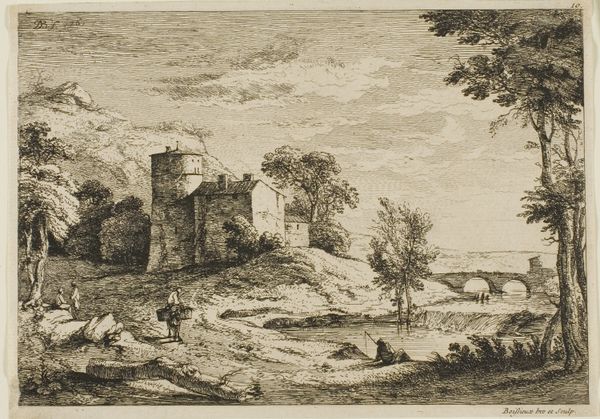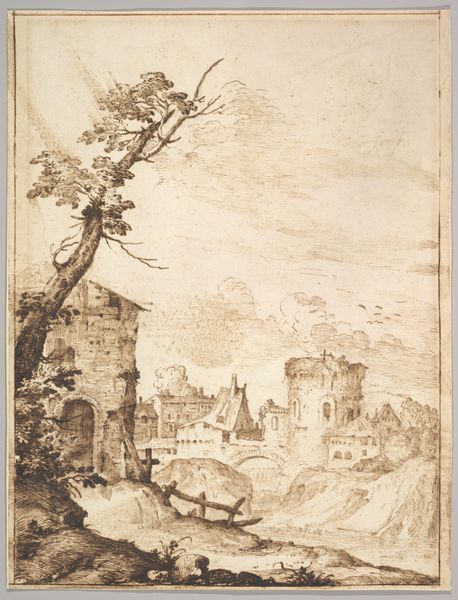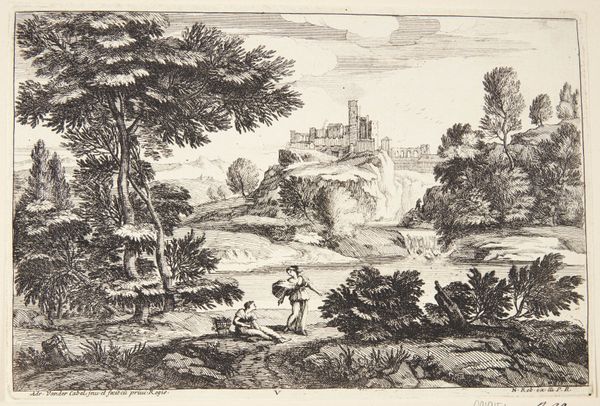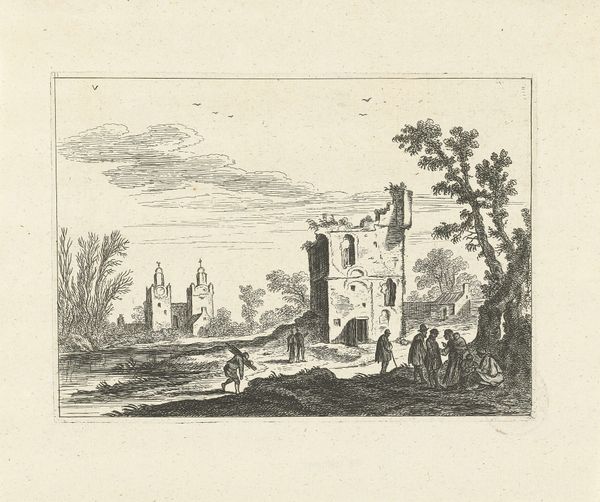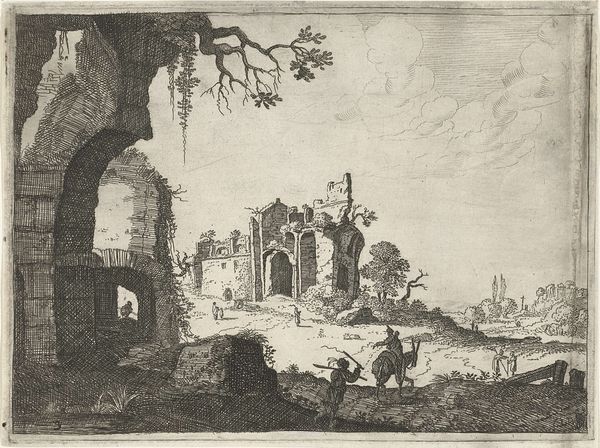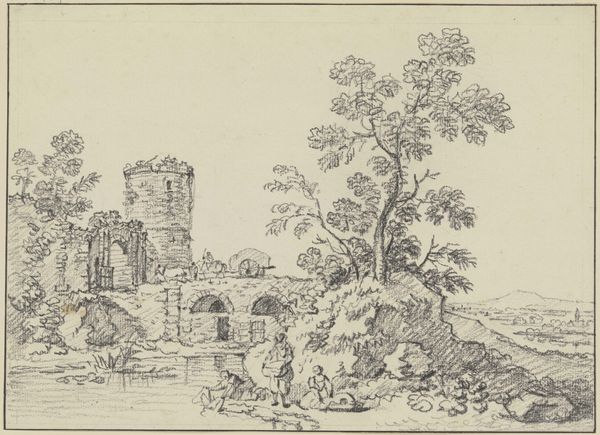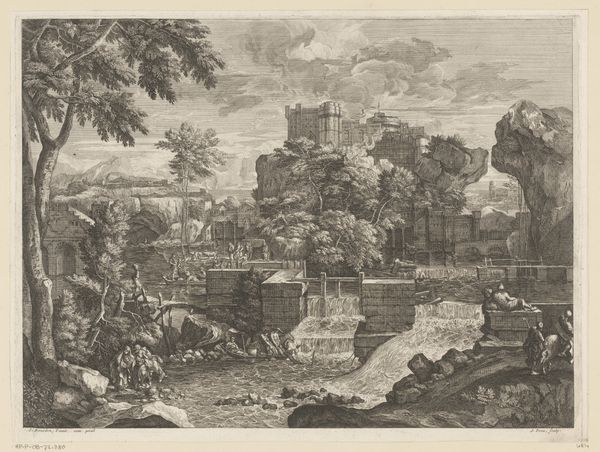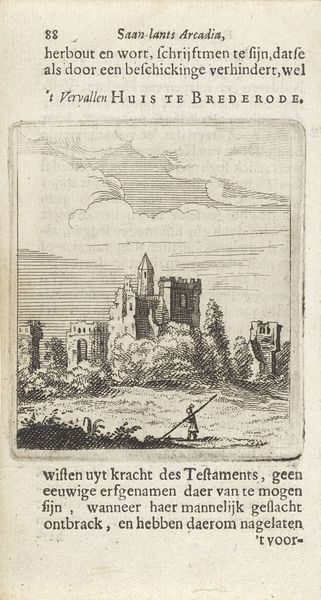
Pastoraal landschap met twee platen op de grond voor een ruïne 1670
0:00
0:00
paulvaniisomer
Rijksmuseum
print, etching, intaglio
#
baroque
# print
#
etching
#
intaglio
#
landscape
#
genre-painting
Dimensions: height 120 mm, width 163 mm
Copyright: Rijks Museum: Open Domain
This pastoral landscape with a ruin was etched by Paul van Somer II, a Dutch artist, around the turn of the 18th century. It presents an interesting take on the classical tradition of landscape art. This idealized vision of the countryside is disrupted by the crumbling ruin at the image’s center. Ruins held a particular fascination for artists and patrons in the Netherlands at this time. On the one hand, they served as reminders of mortality and the transience of human achievement. But they also suggested the cyclical nature of history, the idea that even the greatest civilizations eventually decline and fall. Here, the inclusion of peasants amid the ruins also highlights the vast social and economic inequalities of Dutch society. They stand in stark contrast to the wealthy merchants and landowners who commissioned such idealized landscapes, revealing the social conditions that shaped artistic production. Careful research into the history of Dutch landscape painting and the social conditions of the time allows us to better understand the complex meanings embedded in this seemingly simple image.
Comments
No comments
Be the first to comment and join the conversation on the ultimate creative platform.

